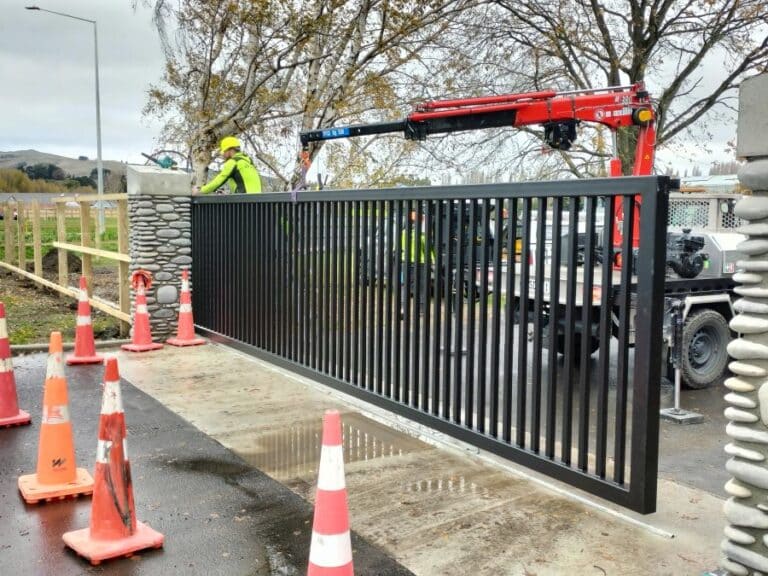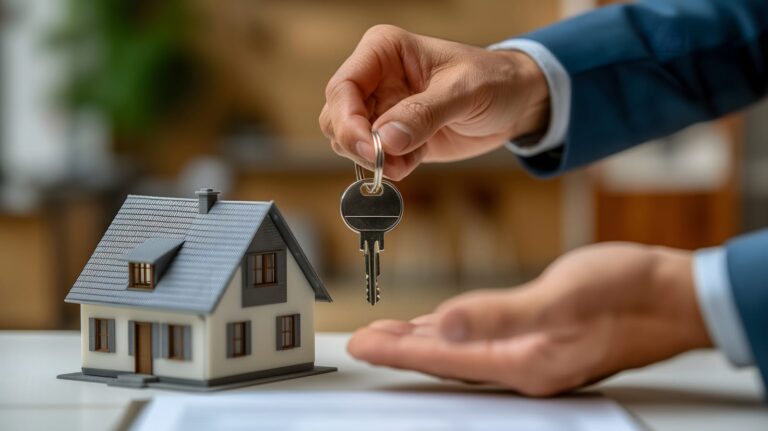It is not enough to simply protect your belongings when you work to make sure that your home is secure; you also need to look out for the health and safety of the people you care about the most.
As a homeowner, you have a crucial responsibility to learn the art of home security, which requires serious study and action on your part.
In this article, we will discuss eight essential home security recommendations that every homeowner should be aware of in order to create a safe haven in their home.
1. Invest in quality locks and deadbolts
Doors serve as the primary barrier to ensuring the security of your home. An essential step in ensuring the security of your home involves installing high-quality locks and deadbolts on all exterior doors.
The locks should extend deeply into the door frame, which can pose a significant challenge for potential intruders attempting to forcefully breach the door.
To maximise the sturdiness of your door frames, it is advisable to consider the installation of strike plates. Smart locks provide an added level of security and convenience by allowing remote monitoring and management.
This means you can control access to your home even when you’re not there. Smart locks offer an extra level of security and convenience.
Checklist:
- Check all exterior doors for high-quality locks and deadbolts.
- Ensure locks extend at least one inch into the door frame.
- Consider upgrading to smart locks for remote monitoring and control.
- Install strike plates to reinforce door frames.
2. Install security cameras
Security cameras serve as a deterrent to potential intruders and provide valuable evidence in the event of an incident occurring. When selecting cameras, it is important to consider their ability to capture high-resolution images, provide night vision functionality, and offer motion detection capabilities.
Strategically position them at key entrance points and vulnerable areas throughout your property. Many contemporary security camera systems are equipped with mobile applications that allow users to view live footage and receive alerts on their smartphones.
By providing real-time control, this feature ensures that users have a sense of security and confidence in their actions.
Checklist:
- Position security cameras at key entry points.
- Choose cameras with high-resolution capabilities.
- Opt for cameras with night vision for low-light conditions.
- Enable motion detection features.
- Set up mobile apps for live viewing and alerts on your smartphone.
3. Use Adequate Lighting
A simple yet effective way to prevent unwanted intrusions is to ensure that your property has adequate exterior illumination. Motion-activated lights are a fantastic option because they help you save money on your energy bill while still providing adequate illumination when it’s required.
Make sure that your walkways, roads, and entrances have adequate lighting to remove potential hiding places and make it difficult for potential thieves to approach your property without being observed.
Consider installing a timer or intelligent lighting system that creates the illusion that someone is home when you are not there to further deter criminal activities at your residence.
Checklist:
- Install motion-activated lights near entry points and pathways.
- Ensure proper lighting for driveways and entrances.
- Consider timers or smart lighting systems for simulating occupancy.
- Regularly check and replace burned-out bulbs.
4. Secure Your Wi-Fi Network
In the modern era of interconnectedness, it is of utmost importance to prioritise the security of your Wi-Fi network. To enhance the security of your Wi-Fi network, it is recommended to begin by generating a robust and distinctive password.
Additionally, enabling network encryption, such as the advanced WPA3 protocol, can effectively safeguard against unauthorised access to your network. It is important to regularly update the firmware of your router in order to address any potential vulnerabilities.
To enhance the security of your primary network and ensure isolation for your smart devices, it is advisable to establish a dedicated network specifically for your smart devices.
By implementing proper security measures for your Wi-Fi network, you can effectively protect both your connected devices and your personal data from potential threats.
Checklist:
- Create a strong and unique Wi-Fi password.
- Enable network encryption like WPA3.
- Update your router’s firmware regularly.
- Set up a separate network for smart devices.
- Change the default passwords on smart devices.
5. Consider a Home Security System
If you desire comprehensive safety, it would be prudent to contemplate acquiring a professionally monitored home security system. These systems encompass a diverse range of sensors, including those designed for monitoring doors and windows, detecting motion, identifying fire and carbon monoxide hazards, and detecting the status of doors and windows.
In the event of a break-in or emergency, an automatic alarm can be sent to both you and a monitoring centre. Once the monitoring centre receives the required information, they will proceed to notify the relevant authorities if deemed necessary.
Many modern security systems now include mobile applications that are designed to be user-friendly. These apps allow you to remotely control and monitor your system, providing you with a high level of peace of mind.
Checklist:
- Create a strong and unique Wi-Fi password.
- Enable network encryption like WPA3.
- Update your router’s firmware regularly.
- Set up a separate network for smart devices.
- Change the default passwords on smart devices.
6. Reinforce Entry Points
In addition to deadbolts and locks, consider strengthening entry points such as doors and windows. Intruders will have a more difficult time breaking into your home if you secure the windows with shatterproof security film. Protect the building from forced entry by reinforcing the door frames with metal plates.
Before answering the door, you should look through a peephole or a smart doorbell camera to see who is there. Your home’s physical security will increase if you reinforce the entry points, making your property a less appealing target for potential criminals.
Checklist:
- Install security film on windows for shatter resistance.
- Reinforce door frames with metal plates.
- Consider installing a peephole or smart doorbell camera.
- Evaluate the security of sliding glass doors and consider adding more locks or bars.
- Inspect garage and shed locks and consider adding alarms if feasible.
When you own a home, you have the satisfaction of providing a safe and pleasurable environment for your family, which is one of the many benefits of home ownership.
You can not only protect your possessions by properly adopting these basic principles of home security, but you can also develop a feeling of safety and peace for those people in your life who are of the utmost importance to you. These are the things that really matter.
7. Create the Illusion of Occupancy
Leaving your home with the appearance that someone is living there might be a useful security measure when you are not there. Make it appear as though there are people inside the home by controlling the lights, radios, and televisions with timers or smart plugs.
If you want to hide the fact that your house is vacant from potential visitors, ask a neighbour to pick up the mail and newspapers instead of having them delivered.
It is best not to broadcast your upcoming vacation plans on social media, as this could tip off would-be thieves that your home will be vacant during your absence. A house that gives the impression that someone is living there is less likely to be broken into.
Checklist:
- Use timers or smart plugs to control lights, radios, and TVs when you’re away.
- Stop mail and newspaper deliveries or ask a neighbour to collect them.
- Avoid posting vacation plans or your absence on social media.
- Ensure outdoor areas are well-maintained to give the appearance of an active home.
8. Emergency Preparedness
Being ready for any kind of unexpected event is an important component of home security. Create a plan for your family to follow in the event of an emergency, such as a fire or another catastrophe, that includes multiple escape routes and a predetermined meeting spot.
Make it a point that every member of your home is aware of how fire extinguishers work and where they may be located. Make sure that you always have access to important emergency supplies like first-aid kits, flashlights, and food that does not need to be refrigerated or cooked.
Get familiar with the local emergency services and the contact information for such services. Your family’s safety in unanticipated circumstances can be ensured by your preparedness for potential emergencies.
Checklist:
- Develop an emergency plan with escape routes and meeting places.
- Ensure all family members know how to operate fire extinguishers and where they are located.
- Keep essential emergency supplies like first-aid kits, flashlights, and non-perishable food readily accessible.
- Familiarise yourself with local emergency services and contact information.
- Regularly review and update your emergency plan and supplies as needed.
One of the advantages of home ownership is the satisfaction of providing a safe and comfortable environment for one’s family. If you can master these crucial home security rules, you will not only be able to secure your property, but you will also be able to provide a sense of safety and peace to those who are most important to you.
Keep in mind that maintaining security is a continuous effort; thus, staying up to date on the most recent technical breakthroughs and industry standards is critical. If you are diligent, plan, and make informed decisions, you can build a house that genuinely reflects the haven it should be.




